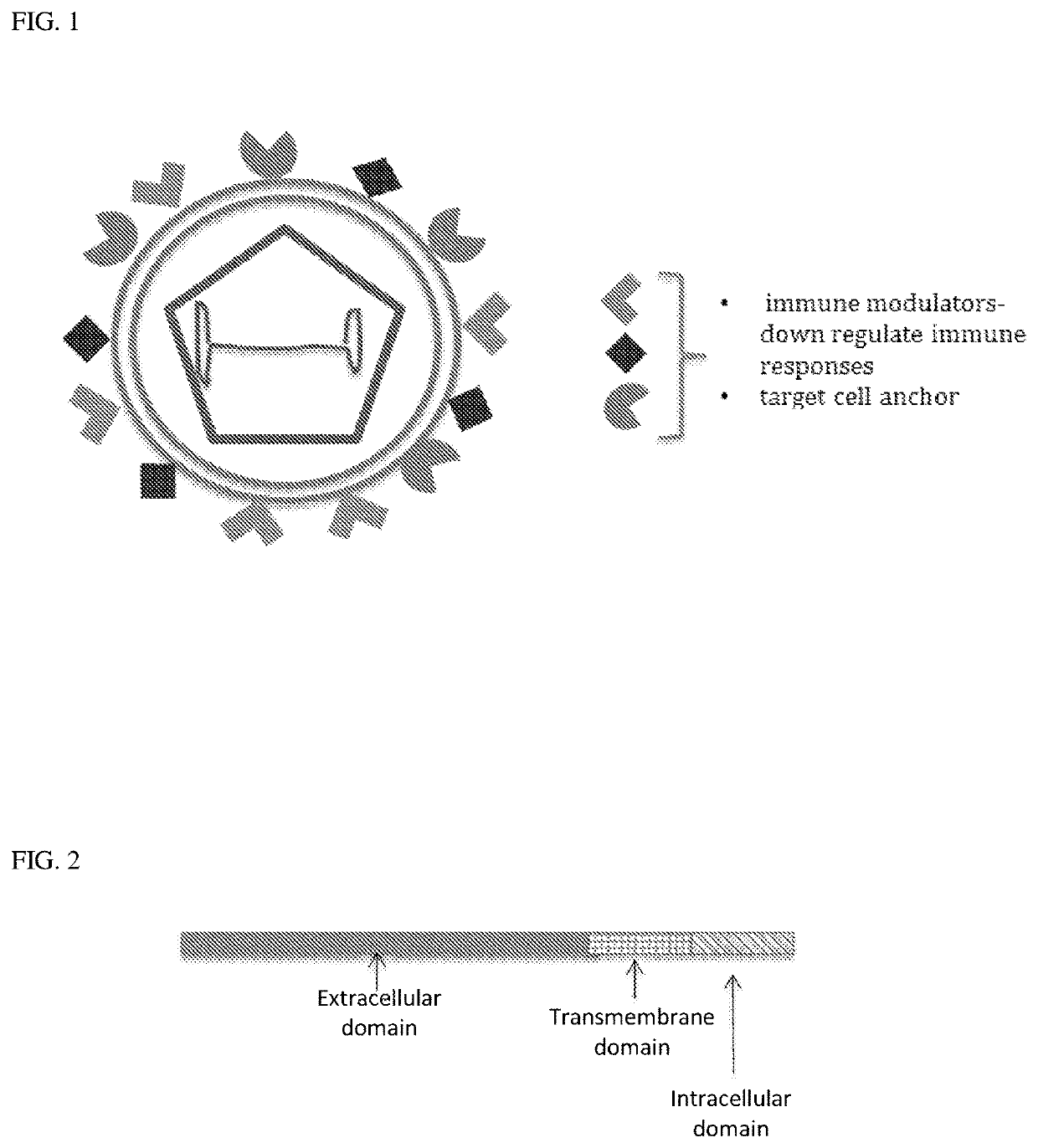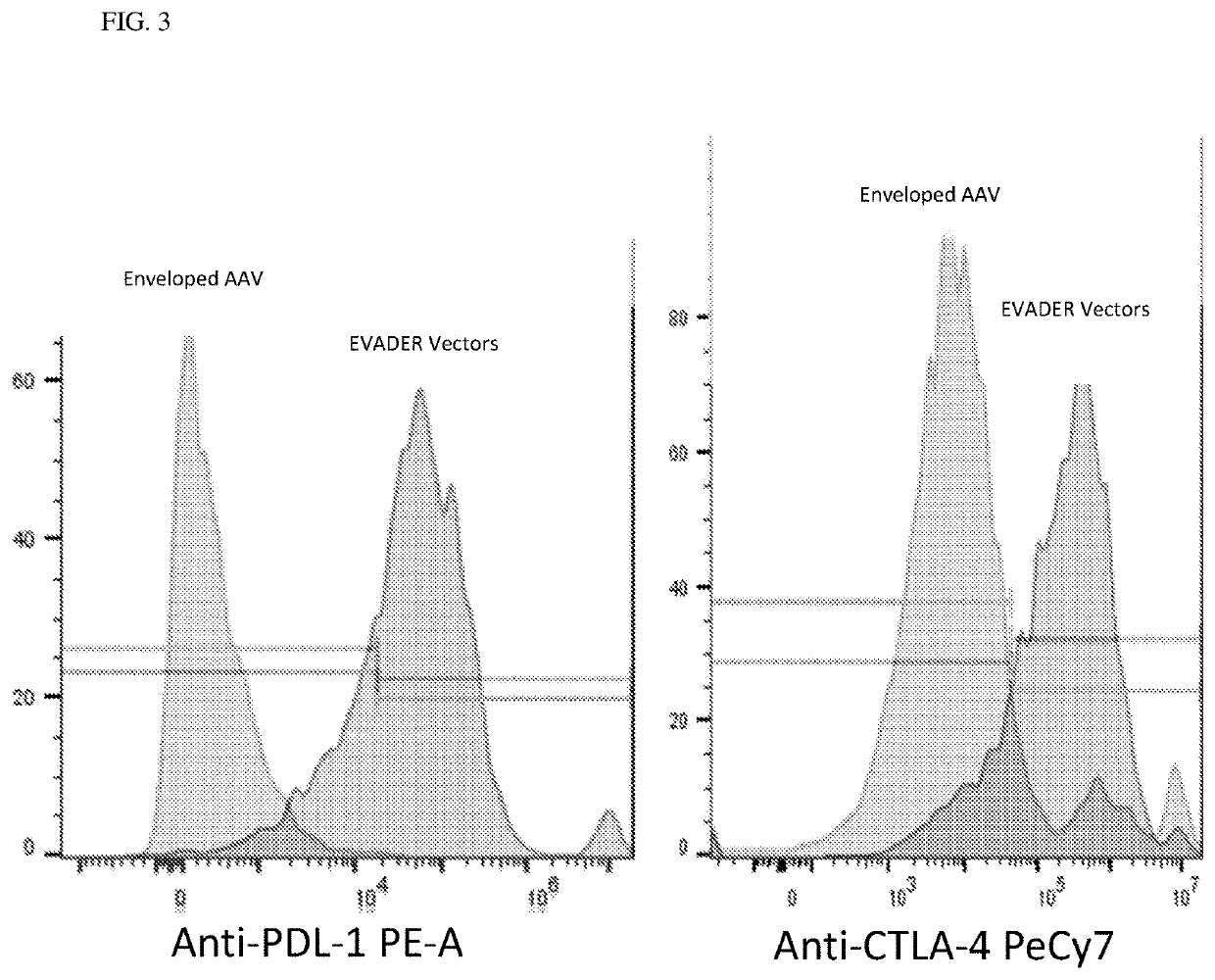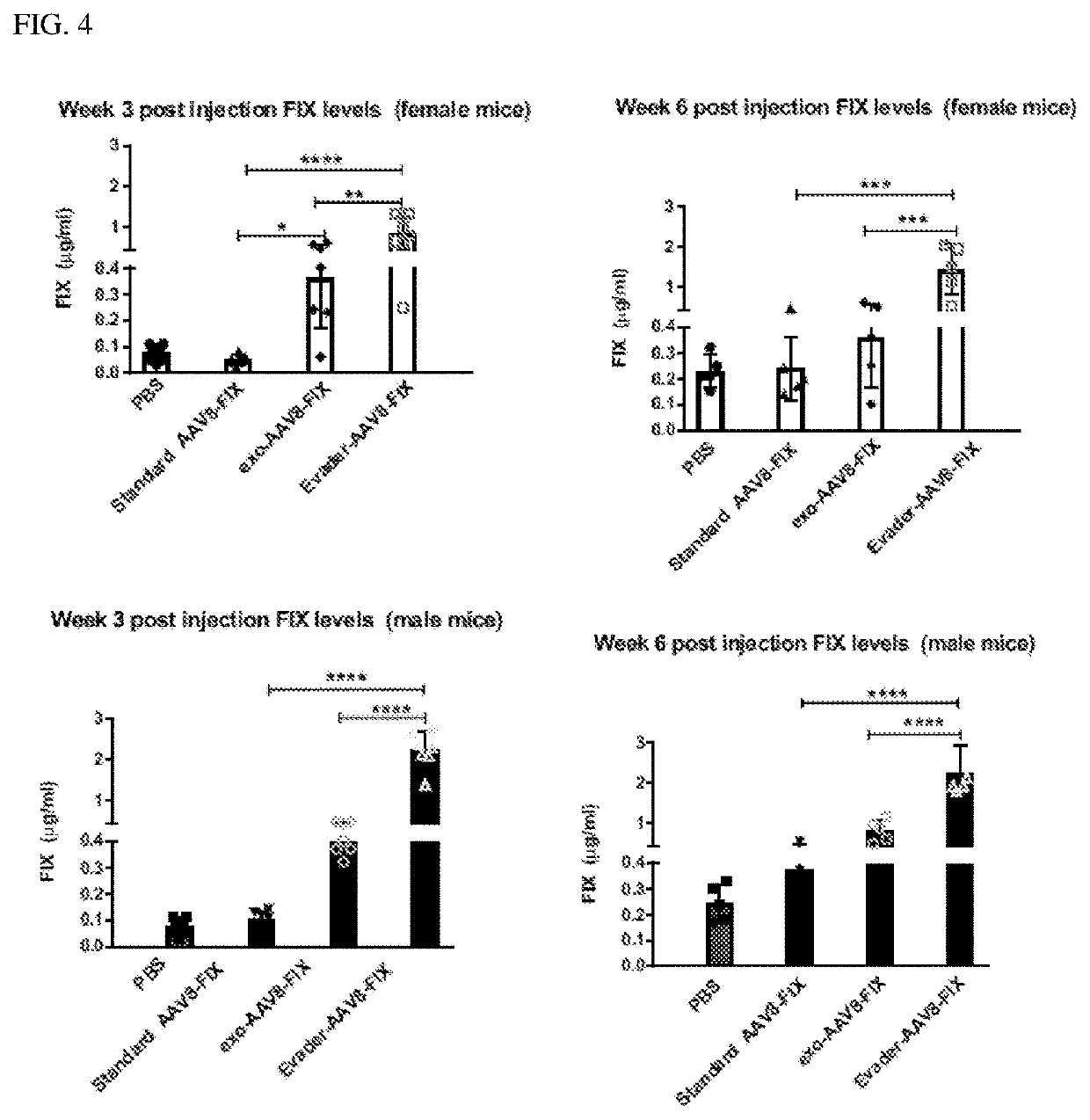Immuno-evasive vectors and use for gene therapy
a gene therapy and immuno-evasion technology, applied in the direction of pharmaceutical active ingredients, peptide/protein ingredients, extracellular fluid disorders, etc., can solve the problems of unproven transgene expression for life, unlikely cases, and the inability to maintain expression levels for the life of the child
- Summary
- Abstract
- Description
- Claims
- Application Information
AI Technical Summary
Benefits of technology
Problems solved by technology
Method used
Image
Examples
example 1
tion of Reduction of Anti-AAV Immune Responses
[0292]A series of experiments are undertaken in cells to demonstrate the invention. A mixed lymphocyte reaction (MLR) using PBMCs purified from AAV positive individuals is to determine how much effector vectors can reduce capsid specific immune responses as compared to serotype matched non-enveloped vectors. Similarly, an MLR is used to test whether effector vectors can inhibit the T cell response to therapeutic protein, as compared to non-enveloped vectors. This second MLR is performed as follows: antigen presenting cells are first incubated with therapeutic protein, then PBMCs (containing T and B cells) are added in the presence of effector vectors or serotype matched non-enveloped vectors. T Cell activation is measured using FACS analysis to count total T cells including CD3+, CD4+, CD8+, CD25+ (IL2R), and FoxP3+. A neutralizing antibody assay is done using serum from individuals tested positive for anti AAV capsid antibodies. The ass...
example 2
oduction
[0293]AAVs were produced using producer cells transfected with AAV production plasmids to express the vector. Enveloped AAVs are is shed into the culture media along with a portion of the cell membrane (envelope), and were collected from culture media via a method that does not remove the envelope. Non-enveloped AAV were obtained by lysing producer cells to collect non-enveloped viral particles.
[0294]In greater detail, Standard (non-enveloped) AAV (referred to as “standard” or “std” vector in the results and figures) and Enveloped AAV vectors (referred to as “exo” vector in the results and figures) were produced in HEK293T cells as described in Simonelli et al. (2010) Molecular Therapy, 18(3): 643-650. The same AAV production plasmids were for both vector types. The vector genome plasmid (pAAV.MCS.cb.Hu FIX), contained the human Factor IX gene as described Nathwani et al. (2011) N Engl J Med, 365: 2357-65. Packaging, and helper plasmids were those used previously (id.). Prod...
example 3
ene Transfer in Mice
[0299]The following example illustrates the use of the vectors produced in Example 2 for gene transfer in vivo in C57Bl / 6 Mice.
[0300]C57Bl / 6 Mice (seven male and seven female) were injected intravenously with 1×109 vector genomes. Dosing groups included: 1) PBS only (vehicle control), 2) AAV8-hFIX, 3) Exo-AAV8-hFIX, and 4) EV-AAV8-hFIX.
[0301]At week three post-dosing, mice were bled and analyzed for (a) human FIX levels (VisuLize™ Factor IX (FIX) Antigen Kit, Affinity Biologicals), (b) AAV8-binding antibodies (BAb) by ELISA using anti-AAV8 IgG, and (c) AAV8-neutralizing antibodies (NAb) using a neutralizing antibody assay (Meliani et al. (2015) Hum Gene Ther Methods, 26:45-53). The in-vitro neutralizing assay is used to measure the titer of antibodies that prevent from test AAV vectors infecting target cells. Briefly, the assay entails incubating an optimized multiplicity of infection (MOI) of test vector containing a reporter gene such as Luciferase, with serial...
PUM
| Property | Measurement | Unit |
|---|---|---|
| particle size | aaaaa | aaaaa |
| particle size | aaaaa | aaaaa |
| particle size | aaaaa | aaaaa |
Abstract
Description
Claims
Application Information
 Login to View More
Login to View More - R&D
- Intellectual Property
- Life Sciences
- Materials
- Tech Scout
- Unparalleled Data Quality
- Higher Quality Content
- 60% Fewer Hallucinations
Browse by: Latest US Patents, China's latest patents, Technical Efficacy Thesaurus, Application Domain, Technology Topic, Popular Technical Reports.
© 2025 PatSnap. All rights reserved.Legal|Privacy policy|Modern Slavery Act Transparency Statement|Sitemap|About US| Contact US: help@patsnap.com



